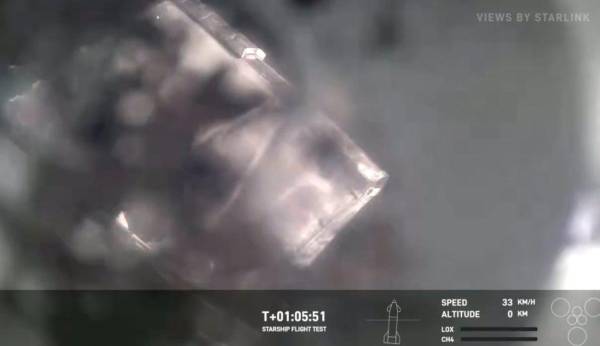Space X achieved the return of its ship to Earth on its fourth flight

June 6 Space Thus, in its fourth flight test, Elon Musk’s space company has achieved the goal of developing a controlled return and eventual reuse capability for its largest space transportation system. Starship took off at 12:50 UTC from Space X’s base in Boca Chica, Texas. The separation of the launch vehicle occurred in the 3rd minute of the flight, at an altitude of 90 kilometers. Four minutes later, the rocket, dubbed Super Heavy, made a burning landing and soft splashdown in the Gulf of Mexico, successfully completing the first of its fourth missions. Meanwhile, the Starship, powered by its own engines, reached low-Earth orbit to orbit at an altitude of 160 kilometers and a speed of over 26,000 kilometers per hour towards the Indian Ocean. After 45 minutes of flight, the tilt maneuver for re-entry began. On-board camera images showed the fuselage peeling off due to intense frictional heat 58 minutes into the flight at an altitude of 54 kilometers.
One hour and five minutes flight
Finally, despite the poor image signal, the rest of the descent was tracked, and an hour and five minutes into the flight, Starship’s controlled splashdown was recorded in the Indian Ocean, west of Australia. Thus, the second goal of the mission was achieved. On the third flight, on March 14, the ship separated from the rocket and entered orbital flight. However, it was lost over the Indian Ocean before its planned controlled splashdown. The rocket also could not be recovered. Several software and hardware upgrades have been made to achieve the new goals. The SpaceX team will also implement operational changes, including eliminating the Super Heavy’s “hot stage” (the hot separation of the two parts of the rocket) after recoil, to reduce the rocket’s mass during the final phase of flight. The fourth flight followed the same trajectory as previous flight tests: Starship intended to splash down in the Indian Ocean, west of Australia. “This flight path does not require deorbiting for re-entry while still achieving the goal of a controlled re-entry,” Space X said.
Moon, Mars and more
SpaceX’s Starship spacecraft and Super Heavy rocket, collectively called Starship, are “a fully reusable transportation system designed to carry crew and cargo to orbit around the Earth, the Moon, Mars and beyond,” according to the company’s description. Starship is the world’s most powerful launch vehicle ever built, capable of carrying up to 150 fully reusable and 250 expendable metric tons. Its height is 121 meters (50 of them correspond to the ship itself) and its diameter is 9. The Super Heavy rocket is propelled by 33 Raptor stage internal combustion engines running on methane and reusable oxygen. The Starship spacecraft has six other engines: three Raptor engines and three Raptor Vacuum (RVac) engines, which are designed for use in the vacuum of space.